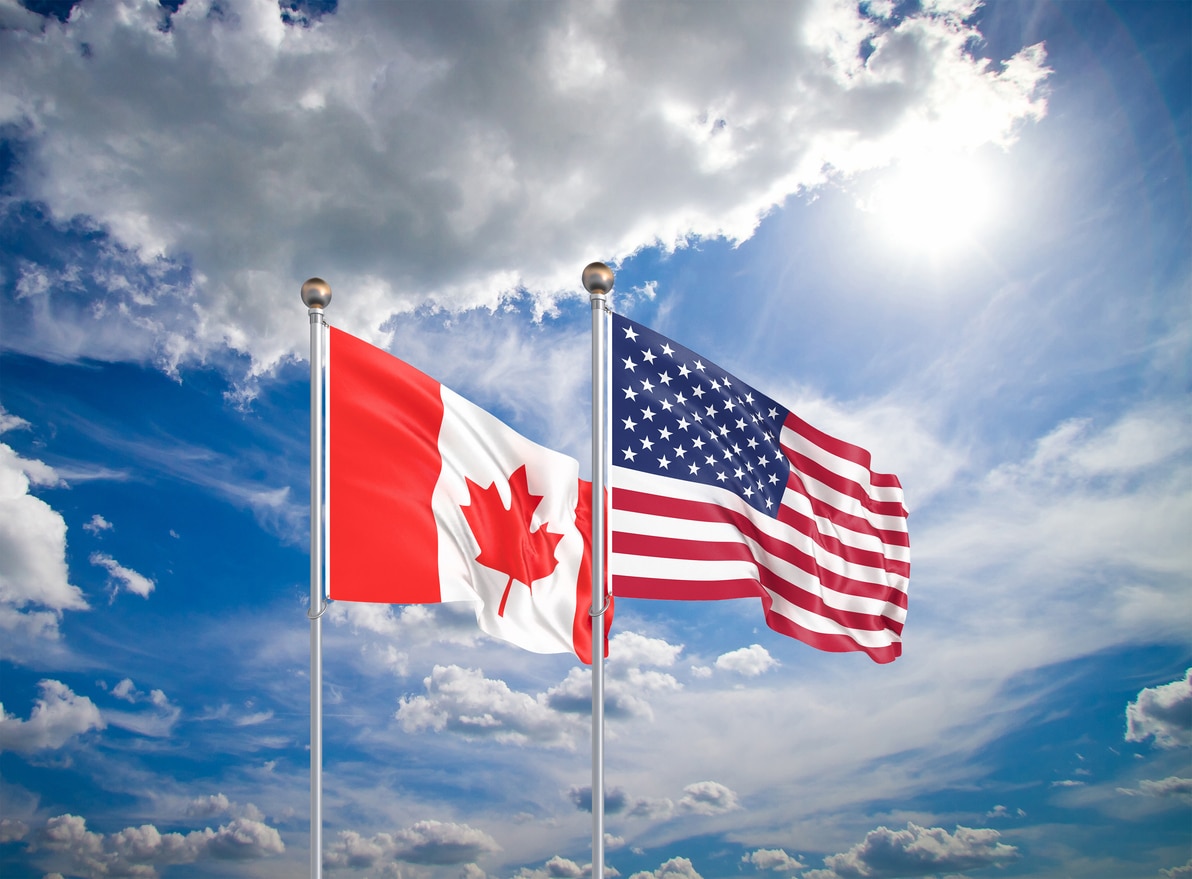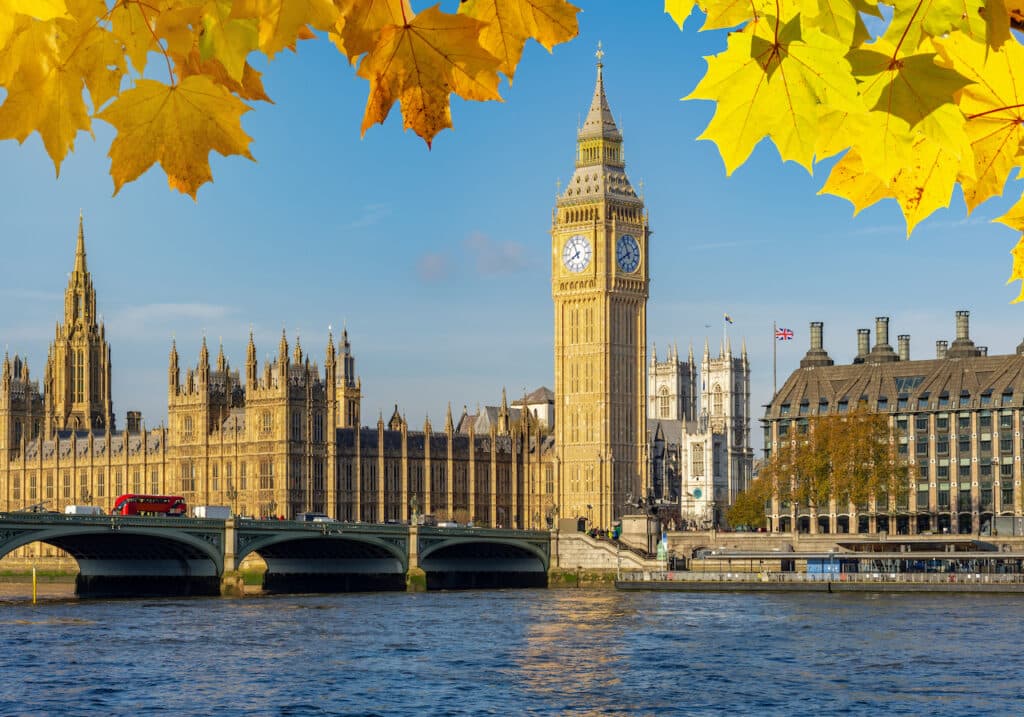If you’re juggling paychecks, retirement plans, or investment accounts on both sides of the world’s longest border, you’ve probably wondered: “How much am I actually going to owe?” Welcome to the Canada vs US tax rate showdown.
Both countries claim to have “progressive” tax systems, but how they slice up your income, stack up your tax brackets, and sprinkle in benefits is about as different as poutine and Philly cheesesteak. And for non-residents or cross-border taxpayers, knowing where (and how much) you owe is the key to avoiding IRS/CRA déjà vu—or, worse, a surprise letter from two sets of tax authorities.
Let’s see how your tax bill stacks up, wherever you call home.
📋 Key Updates for 2025
- Canada’s lowest federal tax rate drops from 15% to 14% for middle-income earners starting July 1, 2025.
- U.S. federal tax brackets have shifted upward for inflation, with the top 37% rate now applying above $626,350 for single filers.
- Canada and the U.S. clarified their tax treaty, making cross-border rules on corporate residency and double taxation clearer for movers.
System overview: How the U.S. and Canadian models work
Before you compare the bottom line, you need to know which game you’re actually playing—because the IRS and CRA each have their own rulebook (and they love a good plot twist).
United States
The U.S. runs on citizenship-based taxation, which means Uncle Sam wants a slice of your pie whether you’re in Alabama or Abu Dhabi.
Your tax bill combines federal income tax, possible state taxes (hello, California, goodbye, Florida), and payroll taxes for Social Security and Medicare (a.k.a. FICA). If you’re self-employed, don’t forget the extra FICA. Americans abroad? You still file—because citizenship, not residency, is what counts.
Canada
North of the border, it’s all about where you hang your hat—residency-based taxation. The Canada Revenue Agency (CRA) collects federal income tax and adds a layer of provincial tax (like in Ontario, Alberta, or Quebec). The province you call home—or the one you accidentally pick for the view—can swing your tax burden dramatically.
Don’t forget the Canada Pension Plan (CPP) and Employment Insurance, which show up on every Canadian pay stub.
Who’s a non-resident, dual filer, or deemed resident?
- Non-resident: You’re living outside the country and don’t meet residency tests.
- Dual filer: You owe taxes to both the IRS and CRA (usually expats or cross-border workers).
- Deemed resident (Canada): Not officially a resident but treated like one for tax year purposes—thanks, snowbird rules!
Your status affects everything—from marginal tax rates to which tax credits you can claim.
Filing as a non-resident: What triggers a tax return?
In the U.S., most Americans must file a federal return if they earn more than the minimum income threshold, even if all their income is from abroad. In Canada, non-residents may need to file if they have Canadian-source income—think rental property in Ontario, dividends from a Toronto company, or a remote job for an Alberta firm.
Exemptions? A handful exist, but the CRA and IRS both have a sixth sense for missing paperwork—so when in doubt, file.
Income tax rates and tax brackets
Let’s talk numbers—the real meat and potatoes of the Canada tax rate vs US debate.
Side-by-side: How the brackets stack up
Both countries love a progressive system, but the devil (and your tax bill) is in the details.
United States:
Federal personal income tax rates for 2025 range from 10% to 37%, depending on your filing status (single, married, etc.). Most states pile on their own tax—anywhere from 0% (Wyoming, Florida) up to over 13% (California, we see you).
Oh, and don’t forget FICA/payroll taxes on top of your federal income tax.
Canada:
Federal personal income tax rates in Canada range from 15% to 33%. Provinces then add their own rates—starting at around 5% in most provinces (10% in Alberta) and going up to about 25.75% at the top end in Quebec. Your total tax bill depends on your province of residence, so it can vary significantly between, say, British Columbia, Saskatchewan, or Labrador.
What you’d pay on $100K (USD)
Let’s imagine you earn $100,000 a year.
- California: You’ll pay federal tax, California state tax, and FICA—totaling roughly 28–33% after credits and standard deductions, but it varies by your filing status.
- British Columbia: $100K (USD, or roughly $137K CAD): You’ll pay Canadian federal and BC provincial tax. After standard credits, your effective rate is about 28–32%.
- Saskatchewan: Slightly lower provincial tax than BC; expect your effective rate to be just a touch less.
How credits and exemptions shift the math
Both countries give you credits and deductions—think Child Tax Credit in the U.S., or the Basic Personal Amount in Canada. The U.S. uses your filing status (single, married, head of household) to tweak tax brackets. In Canada, non-refundable credits and provincial perks can knock a chunk off your final bill—but thresholds and rules change if you have dual income, live in certain provinces, or run your own business.
Key takeaways
- High-income earners: The U.S. has a higher top federal rate, but Canada’s combined federal/provincial tax can get steep—especially if you’re in Quebec.
- Dual income: Taxable income is calculated separately, but credits, thresholds, and even your province or state can change the math.
- Corporate tax rates: Canada’s general federal corporate tax rate is 15% (plus provincial rates), while the U.S. is 21% federally (with possible state tax).
💡 Pro Tip:
Where you live—and how you earn—makes a big difference. From Wyoming to Labrador, every region has its own tax flavor.
Social taxes: Payroll, benefits, and what you get
When it comes to social taxes, both the U.S. and Canada want a cut—not just for roads and politicians, but to (eventually) pay you back with retirement and healthcare perks.
The basics: FICA vs. CPP and EI
United States
Meet FICA—that’s Social Security and Medicare. If you’re working in the USA, 7.65% comes out of your paycheck (and your employer matches it). If you’re self-employed, congrats—you get to pay both shares, totaling 15.3%. These taxes fund your future Social Security checks and a shot at Medicare when you retire (or, let’s be honest, if you retire).
Canada
Say hello to the Canada Pension Plan (CPP) and Employment Insurance (EI). Most employees pay 5.95% (CPP, up to a max) and 1.66% (EI, also capped), with the employer matching both. In Quebec, it’s the QPP instead. These deductions go toward your retirement pension and, yes, that famous Canadian safety net—think paid leave, EI benefits, and, depending on your province, universal healthcare.
Who pays what?
- Employee vs. employer: In both countries, employees and employers split payroll taxes—unless you’re self-employed, in which case you’re, well, both.
- Non-residents: If you’re a non-resident working in the U.S. or Canada, you’ll usually pay these payroll taxes on local income. Some treaty exemptions exist, but most cross-border workers still see these deductions on their pay stubs.
What do you get?
- USA: Social Security and Medicare—basic income and health coverage after you reach the golden years (or become disabled).
- Canada: CPP or QPP retirement pension, EI benefits if you lose your job, and (for residents) access to that famed public healthcare system. (Universal healthcare isn’t technically funded by payroll taxes, but hey, it still feels like a pretty good deal.)
Key takeaways
- Both systems use payroll/social taxes to fund retirement and basic benefits—so don’t skip those payments if you want to collect later.
- Non-residents might be exempt from certain taxes if a treaty applies, but most American or Canadian income triggers payroll deductions somewhere.
Translation: You pay now, you (hopefully) collect later, and both the Canadian tax and USA systems want their share.
Sales tax: Where it hits harder
Just when you think you’ve figured out income tax, sales tax jumps out at the register with a whole new set of surprises—no matter if you’re shopping in the USA or browsing Canadian aisles for maple syrup.
The U.S.: Fifty states, fifty price tags
The USA has no national sales tax. Instead, every state gets creative:
- California and Texas slap on 5–10% at checkout, sometimes with extra city or county surcharges.
- Some states (such as Oregon and Delaware) skip sales tax entirely, so shopping feels like a bargain hunt.
Canada: GST + PST = HST (math optional)
Canada keeps it interesting with a mix of taxes:
- GST (Goods and Services Tax): 5% everywhere.
- PST (Provincial Sales Tax): Varies by province.
- HST (Harmonized Sales Tax): Combines GST and PST in places like Ontario, Newfoundland, and Labrador—up to 15%.
That means a coffee in British Columbia is taxed differently than one in Labrador (and yes, you’ll notice).
Not all purchases are equal
- Groceries: Usually exempt in both countries (phew).
- Digital services: Netflix, software, and streaming? Canada taxes them; some U.S. states are starting to as well.
- Big purchases: Cars, electronics, and home goods can trigger extra levies, especially if you’re crossing borders.
Small business and non-resident owners
Both countries offer sales tax exemptions or rebates for small businesses, exporters, and some non-resident business owners.
💡 Pro Tip:
Collecting, reporting, and remitting sales tax as a business can be a full-time job—make friends with your accountant.
Property tax and capital gains
Buying and owning property is great—until the annual tax bill arrives and you realize every address comes with its own slice of local tax reality.
Property taxes
- Both countries assess property tax at the local (not federal) level—so your bill depends on your city, county, or province.
- In the USA, property tax rates can swing wildly from under 1% in some jurisdictions to over 2% in others (hello, New Jersey!).
- In Canada, expect similar local variability—Toronto, Vancouver, and small-town Labrador all play by different rules.
Capital gains
U.S. capital gains:
- Sell your primary home? You may exclude up to $250,000 ($500,000 if married) of gain if you meet IRS rules.
- Investment income (stocks, second homes) is taxed, but at favorable long-term rates if you’ve held for over a year.
Canada’s capital gains:
- For Canadian residents, only 50% of a capital gain is taxable when you sell investments, real estate, or stocks.
- Non-residents of Canada are also taxed on gains from selling “taxable Canadian property” (such as Canadian real estate or certain shares). Like residents, only 50% of the gain is included in taxable income.
- Unlike residents, non-residents generally do not qualify for the principal residence exemption—so if you sell your Canadian home while living abroad, the full taxable portion of the gain may be subject to Canadian tax.
Timing, residency, and tracking
- Keep track of your “basis” (what you paid, plus improvements) to minimize taxes on both sides of the border.
- Residency at the time of sale can make or break your tax bill—if you’re moving or splitting time, check the rules before cashing out.
- Sale timing matters: different jurisdictions and tax years can change how (and when) you report and pay.
Whether you’re cashing out investments or selling your dream home, both countries want their share—and the details depend on where you are, where the property is, and where you’re filing.
Corporate and business taxes
Running a business on either side of the border? Here’s how Uncle Sam and the CRA divvy up the profits.
Corporate income tax: Who takes the bigger bite?
- U.S.: The federal corporate tax rate is 21%, but don’t celebrate yet—most states pile on their own corporate income tax, ranging from 0% to over 11%, depending on where you do business.
- Canada: The federal corporate rate is 15%, and provinces tack on their own rates (usually 11–16%). Where you incorporate—Toronto, Alberta, or Quebec—can make a serious difference in your bottom line.
Small business deductions and incentives
Both countries love small businesses (in theory), so you’ll find a menu of deductions and incentives.
- The U.S. offers Section 199A deductions for certain pass-through entities and plenty of business expense write-offs.
- Canada features the small business deduction, lowering the tax rate for Canadian-controlled private corporations (CCPCs) on the first chunk of active business income.
LLCs vs. corporations vs. partnerships
- U.S. LLCs: These flexible entities can be taxed as partnerships or corporations. Many digital entrepreneurs and freelancers love LLCs for the flexibility and pass-through treatment, but non-residents should watch out for complex filing rules.
- Canada: Most small businesses incorporate as corporations or form partnerships. There’s no true Canadian LLC, so your choices are a bit more old school, but still efficient for capital gains tax and liability protection.
Filing for non-resident owners and digital entrepreneurs
- Non-residents with U.S. or Canadian business income may need to file and pay tax—even if you never set foot in the country. Digital nomads, e-commerce founders, and cross-border freelancers should keep an eye on “permanent establishment” rules and reporting obligations.
- Both countries want their cut, especially if you have capital gains from selling a business or investments.
💡 Pro Tip:
Where you incorporate, the structure you choose, and your residency all shape your final tax bill—so plan early, and get advice before launching your cross-border empire.
Tax filing requirements for expats and dual filers
Crossing the border doesn’t mean you can escape the paperwork—especially when the IRS and CRA both want to hear from you.
Who has to file in both countries?
- U.S. citizens and green card holders must file a U.S. tax return every year, even if they live in Canada, thanks to citizenship-based taxation.
- Canadian residents with U.S. income (or Americans living in Canada) may also have to file with the CRA, especially if they earn income, own property, or run a business in both countries.
How the tax treaty (mostly) saves you
- The U.S.–Canada tax treaty helps prevent double taxation, letting you claim credits for taxes paid in the other country and decide which nation gets first dibs on your income.
- The tie-breaker rule comes into play when you could be a tax resident of both countries; it uses your home, family ties, and center of vital interests to decide who gets to tax you (first).
Common cross-border forms
- FBAR: Required for Americans with $10,000+ in non-U.S. financial accounts (think Canadian bank accounts).
- FATCA: More reporting to the IRS for Americans abroad—just for fun.
- T1135: Canada’s version, for residents with foreign investments totaling over CAD $100,000.
Why you need a pro (seriously)
With cross-border taxes, it’s easy to miss a form, misreport an account, or trigger double taxation. A CPA with U.S.-Canada expertise isn’t just nice to have—they’re essential for anyone with dual status, expat income, or a complicated financial life.
So… who pays more in the end?
If you’re hoping for a simple answer—sorry! Whether Canada or the U.S. takes the bigger bite depends on more than just tax brackets.
Canada:
You might pay higher income taxes and see more taken off your paycheck for public programs. But, you get universal healthcare, parental leave, and social benefits that keep out-of-pocket expenses lower—no shock medical bills or $2,000 ambulance rides.
USA:
You might snag a lower federal tax rate, but you’ll likely fork out more for private health insurance, property tax, and even college tuition. The “hidden fees” of American life can add up quickly, especially for families and retirees.
Net outcome: It’s not just about how much you pay the tax man—it’s about what you get back. Factor in healthcare, education, and social services, and sometimes those higher Canadian taxes actually mean more money in your pocket at the end of the year.
💡 Pro Tip:
Add up your taxes, subtract your expenses, and look at the full package—not just the sticker price. Sometimes, the real winner is the country that lets you sleep best at night.
Taxes are only one piece of the puzzle
A headline tax rate never tells the full story. True, income levels and where you file matter—but so do the extras: healthcare, education costs, property taxes, and quality of life.
Before you jump to conclusions (or pack your bags for Vancouver or New York), remember—what really counts is your net outcome and peace of mind. Smart cross-border planning can help you keep more, spend less, and avoid tax-time surprises—no matter which side of the border you call home.
Thinking about your next move? Start with the tax side. Bright!Tax specializes in helping Americans manage U.S. and Canadian taxes, so you can focus on living well—wherever life takes you. Get in touch today and let’s make your cross-border journey as smooth as possible.
Frequently Asked Questions
-
Are taxes higher in Canada or the U.S.?
It depends on your income level, where you live, and how you earn. Canada usually has higher income tax rates, but the U.S. can hit harder with property taxes, healthcare costs, and fewer social benefits.
-
How do federal and state/provincial taxes compare?
The U.S. has federal and (sometimes) state income taxes; Canada has federal and provincial rates. Your total tax bill can swing significantly depending on whether you’re filing in Texas (no state tax) or Quebec (one of Canada’s highest provincial rates).
-
Do both countries have progressive tax brackets?
Yes—both the Canada tax rate and US tax systems are progressive, meaning your tax rate increases as your income rises. The exact brackets and thresholds differ, though.
-
How is social tax (payroll) handled in each country?
Americans pay FICA (Social Security and Medicare), split between employer and employee. Canadians pay into CPP (or QPP in Quebec) and EI, with both employer and employee contributions.
-
What about sales tax—where is it higher?
Canada often has higher combined sales taxes (GST/HST/PST can reach 15%), while U.S. state and local sales taxes usually top out around 10%, but there’s no national sales tax.
-
Can Americans living in Canada (or vice versa) owe taxes in both countries?
Yes, but the U.S.–Canada tax treaty and credits help prevent double taxation. Still, cross-border taxpayers usually need to file returns in both countries.
-
How are capital gains taxed differently?
In the U.S., you may exclude some gain from selling your primary home and pay lower rates on long-term investments. In Canada, residents are taxed on 50% of capital gains, but non-residents may owe on 100% of certain gains from Canadian property.
-
What are the main differences for business owners?
U.S. corporations pay 21% federal tax plus state tax; Canada’s federal rate is 15% plus provincial rates. LLCs in the U.S. have flexible tax treatment, while Canadian businesses must choose between corporations or partnerships.
-
Do healthcare costs affect overall tax burden?
Absolutely. Canadian taxes fund universal healthcare, so out-of-pocket costs are typically lower. In the U.S., lower taxes often mean higher health insurance premiums and medical expenses.
-
Is one country always “better” for taxes?
Not necessarily. The best fit depends on your unique mix of income, location, family needs, and long-term plans. Comparing net outcome—not just rates—matters most.
-
Who should I talk to before making a move?
A cross-border tax advisor (like Bright!Tax!) can help you navigate the Canada tax rate vs US puzzle and keep your finances optimized—no matter which side of the border you call home.

 Connect on LinkedIn
Connect on LinkedIn

